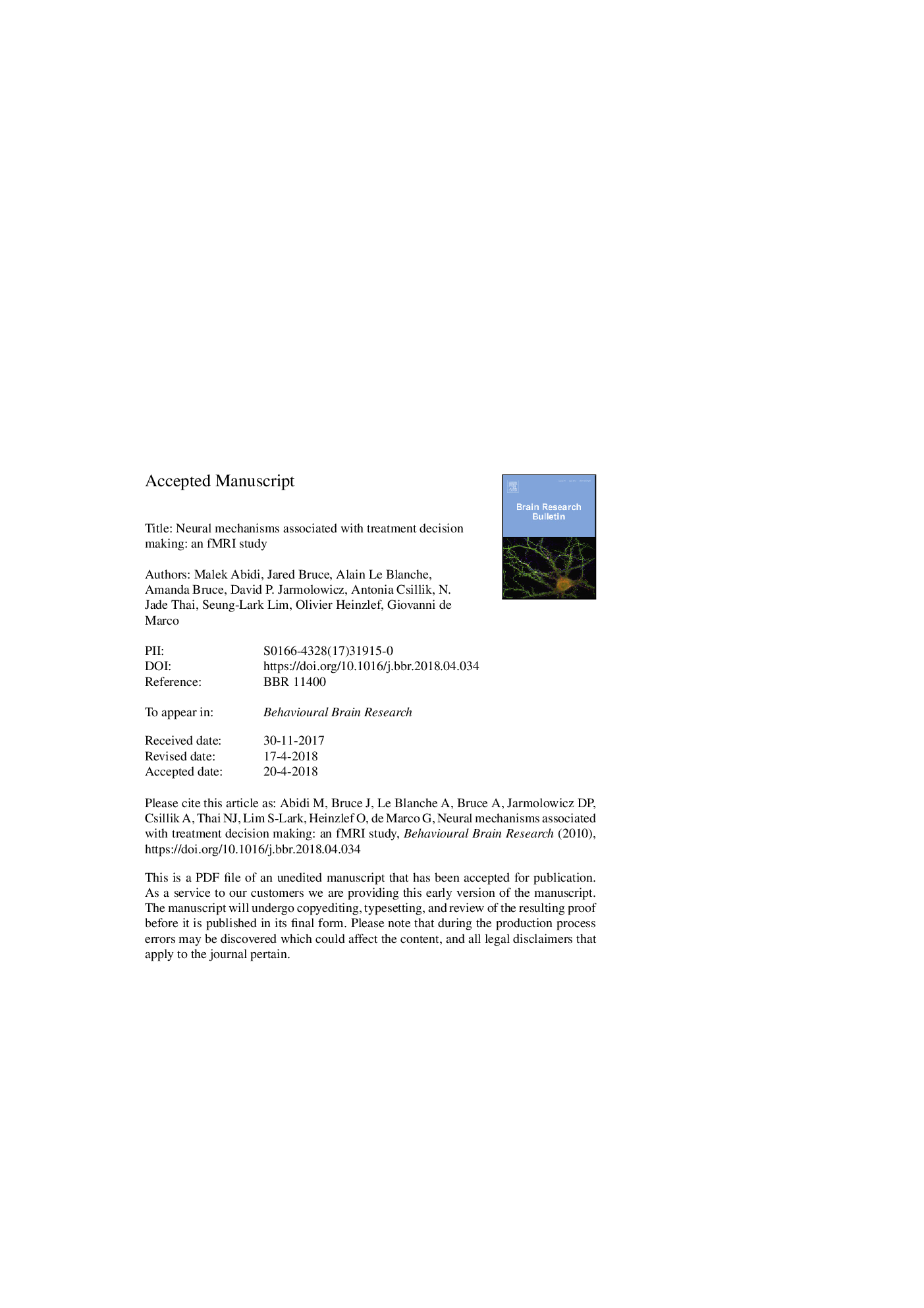| Article ID | Journal | Published Year | Pages | File Type |
|---|---|---|---|---|
| 8837715 | Behavioural Brain Research | 2018 | 29 Pages |
Abstract
Behavioral data showed that participants are more likely to refuse medication when side effects are high and efficacy is low. SCRs values were significantly higher when people made medication decisions in the severe compared to mild condition. Functionally, OFC and VS were activated in the mild condition and were associated with increased likehood of choosing to take medication (higher area under the curve "AUC" side effects/efficacy). These regions also demonstrated an increased effective connectivity when participants valued treatment benefits. By contrast, the OFC, insula and amygdala were activated in the severe condition and were associated with and increased likelihood to refuse treatment. These regions showed enhanced effective connectivity when participants were confronted with increased side effects severity. This is the first study to examine the behavioral and neural bases of medical decision making.
Related Topics
Life Sciences
Neuroscience
Behavioral Neuroscience
Authors
Malek Abidi, Jared Bruce, Alain Le Blanche, Amanda Bruce, David P. Jarmolowicz, Antonia Csillik, N. Jade Thai, Seung-Lark Lim, Olivier Heinzlef, Giovanni de Marco,
